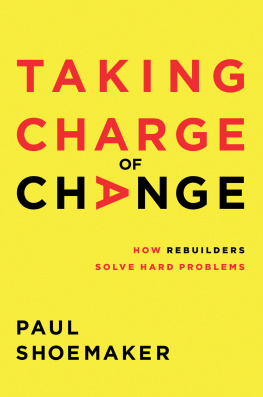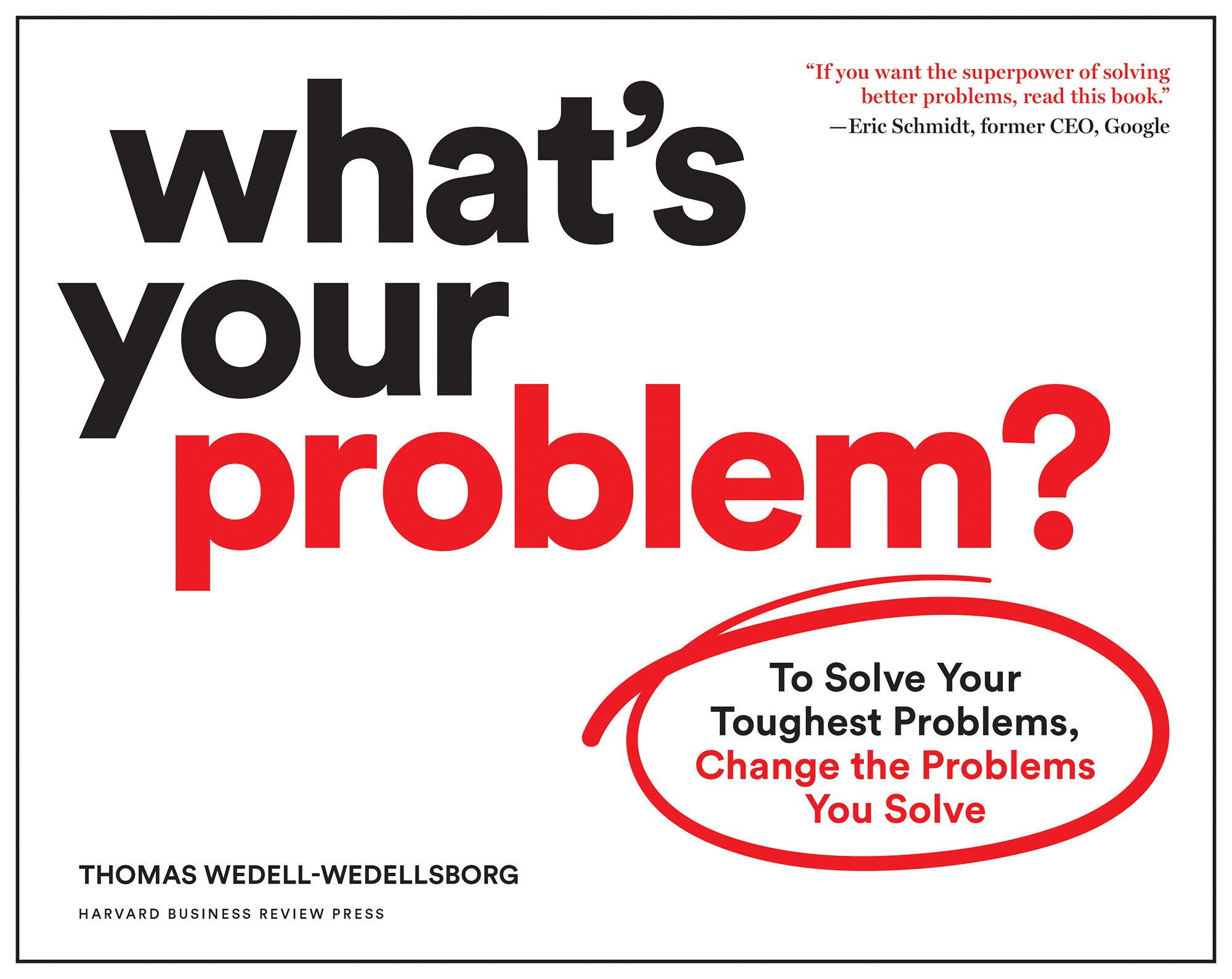HBR Press Quantity Sales Discounts
Harvard Business Review Press titles are available at significant quantity discounts when purchased in bulk for client gifts, sales promotions, and premiums. Special editions, including books with corporate logos, customized covers, and letters from the company or CEO printed in the front matter, as well as excerpts of existing books, can also be created in large quantities for special needs.
For details and discount information for both print and ebook formats, contact .
Copyright 2020 Thomas Wedell-Wedellsborg
All rights reserved
No part of this publication may be reproduced, stored in or introduced into a retrieval system, or transmitted, in any form, or by any means (electronic, mechanical, photocopying, recording, or otherwise), without the prior permission of the publisher. Requests for permission should be directed to , or mailed to Permissions, Harvard Business School Publishing, 60 Harvard Way, Boston, Massachusetts 02163.
The web addresses referenced in this book were live and correct at the time of the books publication but may be subject to change.
Library of Congress Cataloging-in-Publication Data
Names: Wedell-Wedellsborg, Thomas, author.
Title: Whats your problem? : to solve your toughest problems, change the problems you solve / Thomas Wedell-Wedellsborg.
Description: Boston : Harvard Business Review Press, [2020] | Includes index.
Identifiers: LCCN 2019041082 (print) | LCCN 2019041083 (ebook) | ISBN 9781633697225 (paperback) | ISBN 9781633697232 (ebook)
Subjects: LCSH: Problem solving. | Organizational effectiveness. | Reframing (Psychotherapy)
Classification: LCC HD30.29 .W434 2020 (print) | LCC HD30.29 (ebook) | DDC 658.4/03dc23
LC record available at https://lccn.loc.gov/2019041082
LC ebook record available at https://lccn.loc.gov/2019041083
ISBN: 978-1-63369-722-5
eISBN: 978-1-63369-723-2
The paper used in this publication meets the requirements of the American National Standard for Permanence of Paper for Publications and Documents in Libraries and Archives Z39.48-1992.
For Paddy Miller
contents
part one
solve the right problem
introduction
whats your problem?

ARE YOU SOLVING THE RIGHT PROBLEMS?
Well start with a question. Answer it for your team, your workplace, your society, your family, or just yourself:
How much do we wastetime, money, energy, even livesby solving the wrong problems?
I have posed this question to people from all over the world, and rarely does anyone think the answer is insignificant. If your own reply gives you pause, consider a second question:
What if we could get better at solving the right problems?
What difference might it make to your lifeto the people and the causes you care aboutif everyone got just a little bit better at barking up the right trees?
This book is about how to do that. Its purpose is to upgrade the worlds ability to solve problems. It does this by sharing a very specific skill called reframing the problem, or reframing in short.
More than fifty years of research has shown that reframing is an exceptionally powerful skilland not just for solving problems. People who master reframing make better decisions, get more original ideas, and tend to lead more remarkable lives.
Best of all, its not that hard to learn. By reading this book, you will become a better thinker and problem solver. Youll likely make headway on some of your current challenges, toonot later, but while you are reading this book.
To understand what reframing is, read on. A slow elevator is waiting for you.
THE SLOW ELEVATOR PROBLEM
Heres the central idea of this book:
The way you frame a problem determines which solutions you come up with.
By shifting the way you see the problemthat is, by reframing ityou can sometimes find radically better solutions.
To see how this works, consider this classic example, the slow elevator problem:
You are the owner of an office building, and your tenants are complaining about the elevator. Its old and slow, and they have to wait a lot. Several tenants are threatening to break their leases if you dont fix the problem.
First of all, notice how this problem isnt presented to you neutrally. Like most of the problems we encounter in the real world, someone has already framed it for you: the problem is that the elevator is slow.
In our eagerness to find a solution, many of us dont notice how the problem is framed; we take it for granted. As a result, we start coming up with ideas for how to make the elevator faster: Could we upgrade the motor? Could we improve the algorithm? Do we need to install a new elevator?







